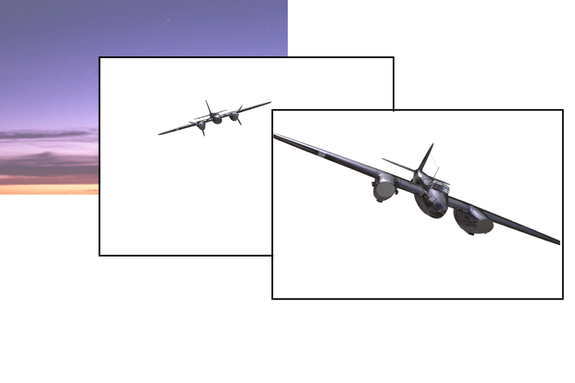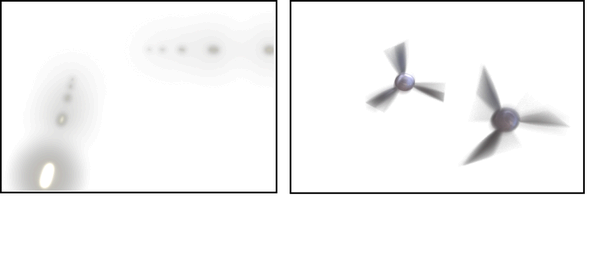You can segment your scene using render layers. If you have foreground, midground, and background objects in your scene, you can render them using three different layers. This can save a lot of time when rendering if there is no interaction between the objects; for example, in a forest scene, you would render three different layers separately: a static background (sky, trees), midground (a cottage), and foreground (characters). Rendering the static background once and then compositing later can speed up your workflow and render time dramatically.
A more complex example might involve different effects that you want to composite. One layer has raytracing turned on just for those objects that need it (raytracing can be a very time-consuming process). A second layer has glow lights which will be composited with certain objects to produce halo effects; and a third and fourth have the shadow and specular information for later compositing.
Consider the following example of two planes in a dogfight.

This image is made up of five composited layers that are rendered separately. The background is one layer, as is the foreground airplane and the midground airplane.

The two other layers are for effects: the midground bullets with their glow and blur are rendered on a separate layer, as are the motion-blurred propellers.

All these layers are composited together with different blend modes in order to create the final image you see here. This simplifies the workflow and makes it easy to re-render parts of the scene with different options.
A larger production may use different renderers for different passes as well as modifications to lights, objects, and layer overrides. For example:
 Except where otherwise noted, this work is licensed under a Creative Commons Attribution-NonCommercial-ShareAlike 3.0 Unported License
Except where otherwise noted, this work is licensed under a Creative Commons Attribution-NonCommercial-ShareAlike 3.0 Unported License